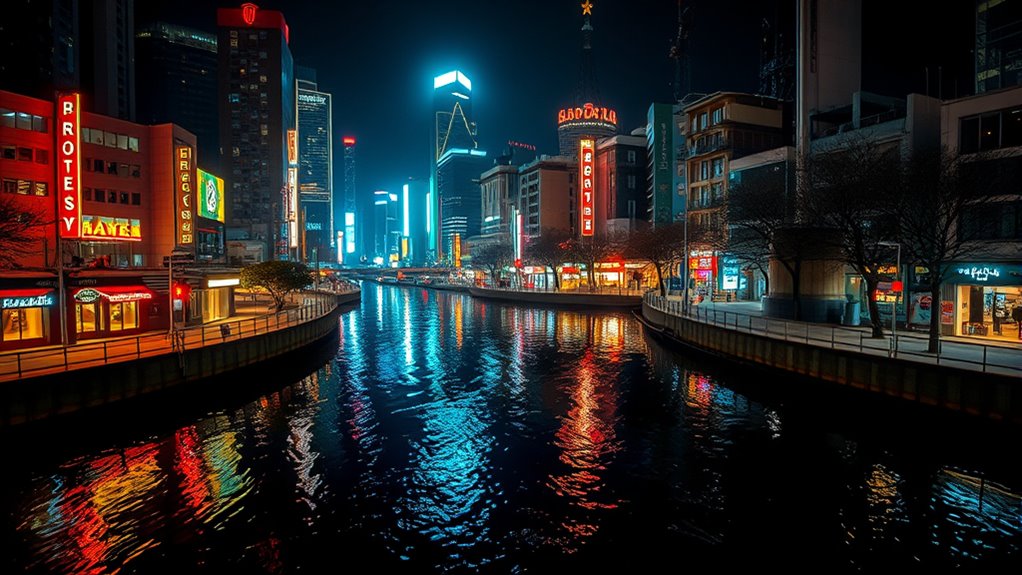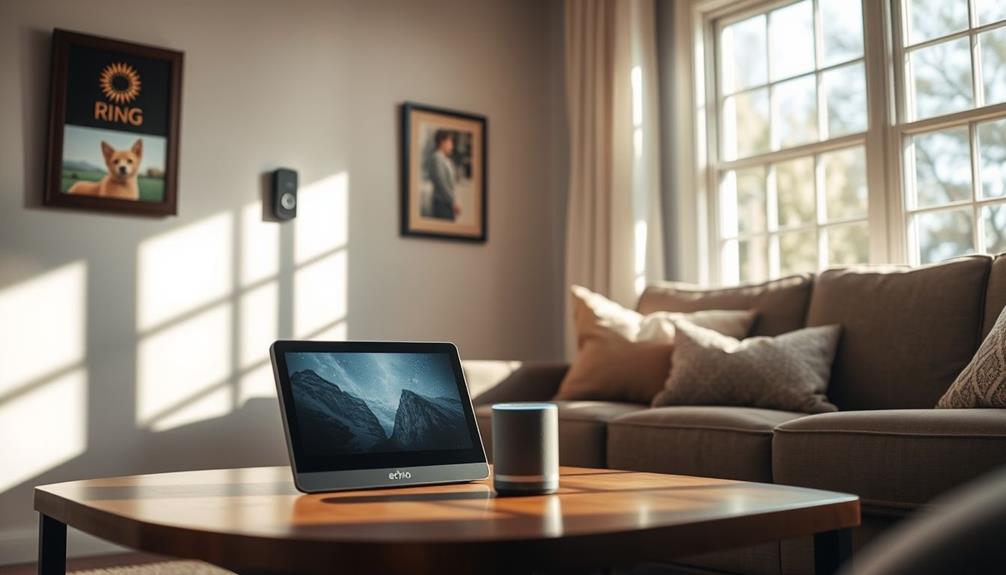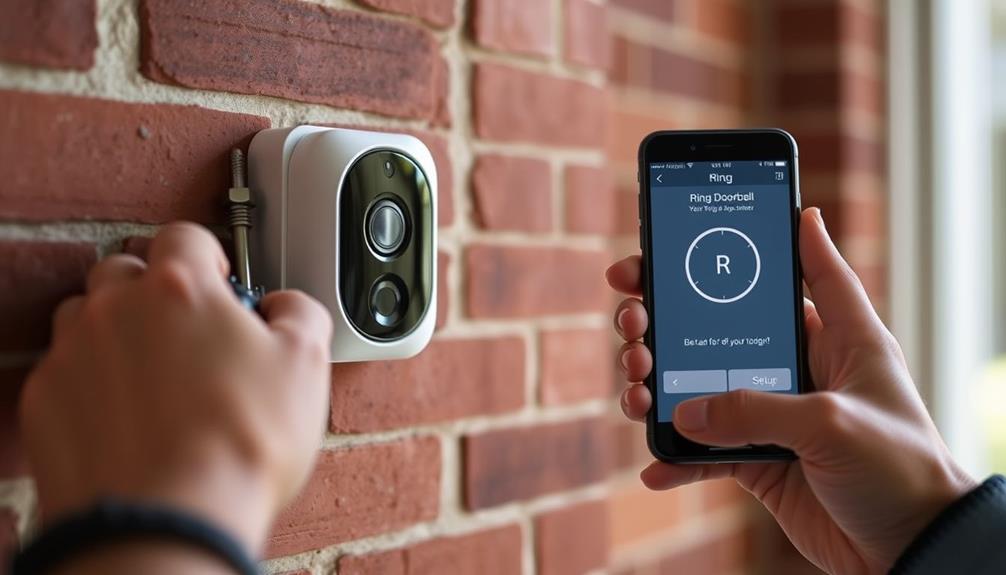HDR substantially improves your night-time Ring recordings by balancing exposure, boosting color accuracy, and capturing more detail in low-light settings. It combines multiple images to extend dynamic range, making shadows clearer and highlights more natural. This results in sharper, more reliable footage perfect for identifying faces or license plates. While HDR faces some challenges like noise or motion artifacts, ongoing innovations promise even better clarity. Keep exploring to discover how these advancements could transform your security footage.
Key Takeaways
- HDR balances exposure, revealing more details in both shadows and highlights during nighttime recordings.
- It enhances color accuracy, making objects and faces clearer in low-light conditions.
- HDR reduces motion blur and ghosting, improving image clarity for moving objects at night.
- It enables better identification of license plates and faces by capturing consistent, high-quality images.
- HDR technology compensates for low-light challenges, ensuring reliable security footage in various nighttime scenarios.
How HDR Enhances Visibility in Low-Light Conditions
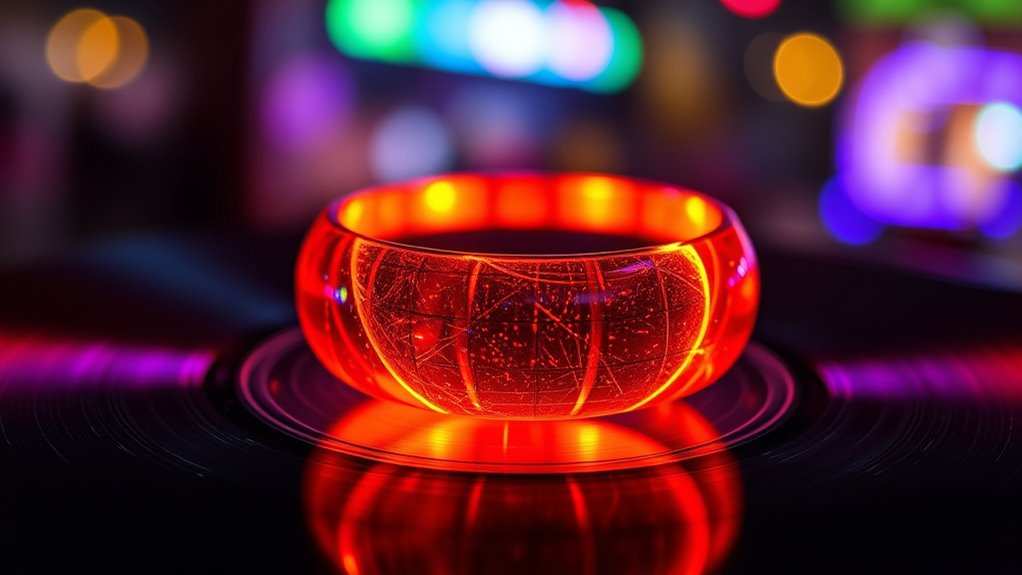
High Dynamic Range (HDR) technology substantially improves visibility in low-light conditions by balancing exposure levels across the entire image. This results in better color accuracy, making all objects more true-to-life despite dim lighting. HDR extends the dynamic range, capturing details in shadows and highlights that standard recordings often miss. When you use HDR, dark areas become clearer without overexposing bright spots, giving you a more complete view. This enhanced dynamic range ensures that even subtle details are visible, reducing the chances of missing important elements during nighttime recordings. Additionally, HDR helps to control contrast levels in challenging lighting environments, further enhancing image quality. As a result, your Ring camera delivers sharper, more vibrant footage in low-light environments, providing you with greater confidence in identifying faces, objects, and movements during nighttime.
The Technical Mechanisms Behind Night-Time HDR Imaging

Night-time HDR imaging relies on advanced sensor and processing techniques to capture a wide range of brightness levels in low-light conditions. You benefit from sensor calibration, which guarantees accurate data collection, minimizing noise and artifacts. Dynamic range expansion combines multiple exposures to create a single image that preserves details in shadows and highlights. This process involves capturing several images at different exposure levels and merging them through sophisticated algorithms. These algorithms align images precisely, preventing ghosting or blurring. The sensor’s ability to adapt quickly to changing light conditions is critical. By leveraging sensor calibration and dynamic range expansion, HDR systems produce clearer, more detailed night-time recordings, allowing your security footage to reveal details that standard cameras might miss. Additionally, the integration of automation technologies can further streamline the processing of HDR images, leading to faster and more efficient image enhancement. This technical synergy enhances overall night-time visibility dramatically.
Benefits of HDR for Security and Surveillance Accuracy

HDR technology markedly enhances security and surveillance accuracy by providing clearer, more detailed footage in challenging lighting conditions. Proper HDR calibration guarantees your camera captures accurate brightness levels, reducing overexposed or underexposed areas that could hide critical details. This calibration improves image quality, allowing you to identify faces, license plates, or suspicious activity more reliably. Additionally, advanced image stabilization complements HDR by reducing motion blur, ensuring footage remains sharp during movement or low-light situations. Together, HDR calibration and image stabilization deliver consistent, high-quality images that improve situational awareness and evidence collection. This combination helps security personnel respond more effectively, increasing overall surveillance effectiveness and reducing blind spots, especially at night when clarity is essential for accurate assessment. Color accuracy also plays a vital role in ensuring that captured images reflect true-to-life colors, further improving identification and analysis.
Challenges and Limitations of HDR in Night Recordings
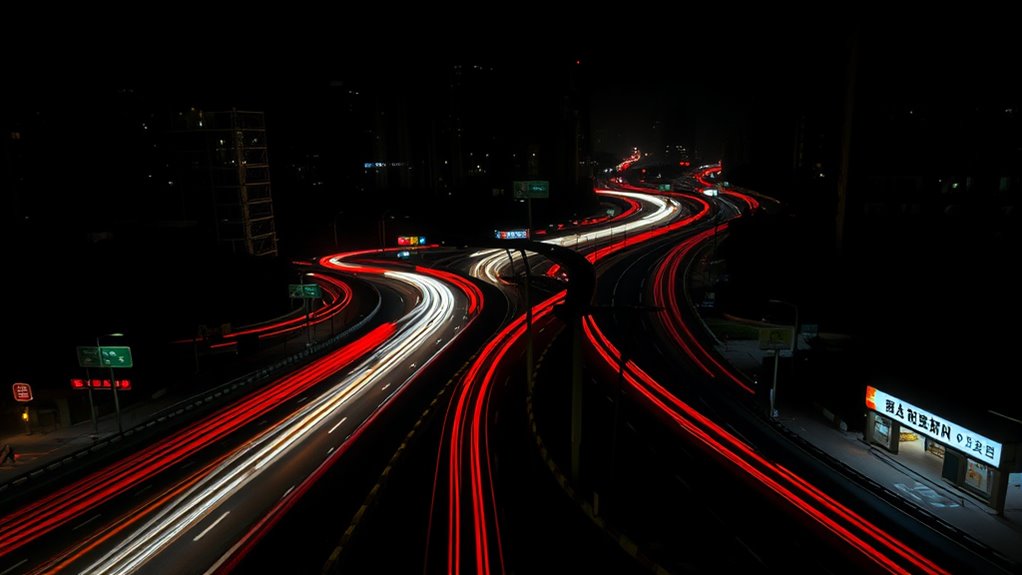
While HDR technology improves visibility in low-light conditions, it also introduces specific challenges that can affect its effectiveness during night recordings. One major issue is balancing sensor sensitivity with dynamic range; increasing sensor sensitivity may cause noise, while expanding dynamic range can lead to overexposed highlights or lost details. Additionally, HDR processing demands more processing power, which can slow down real-time recording or cause lag. Motion artifacts become more common, especially when capturing fast-moving objects in dark environments. Ultimately, limited sensor capabilities in some cameras restrict the full potential of HDR, making it difficult to achieve consistent quality across varied lighting scenarios. For optimal results, understanding the trade-offs in sensor sensitivity is essential to managing noise and detail preservation.
Future Trends and Improvements in HDR Night Vision Technology

Advancements in sensor technology and processing algorithms are paving the way for more effective HDR night vision systems. Future improvements will enhance sensor sensitivity, allowing cameras to detect subtle differences in low-light conditions, which boosts overall image quality. Increased focus on thermal contrast will help distinguish objects more clearly, even in challenging environments. These innovations will enable your night recordings to capture sharper details and better differentiate between objects and backgrounds. Additionally, emerging algorithms will optimize dynamic range, reducing noise and improving clarity in high-contrast scenes. As sensor sensitivity continues to improve, your HDR night vision devices will become more responsive and reliable. Incorporating advanced image processing techniques can further enhance the quality and usability of night-time recordings. Together, these trends promise a future where night-time recordings are more detailed, accurate, and versatile, transforming the way you monitor and record in darkness.
Frequently Asked Questions
How Does HDR Affect the Battery Life of Night-Time Recording Devices?
HDR increases the power consumption of your night-time recording devices, leading to greater battery drain. When HDR is active, your device processes more data and enhances image quality, which requires additional energy. As a result, you’ll notice faster battery depletion during extended recording sessions. To manage this, consider adjusting settings or using external power sources, as HDR’s improved visuals come with the trade-off of increased power consumption and reduced battery life.
What Environmental Factors Influence HDR Performance in Night Recordings?
Like a painter adjusting their palette, you’ll find lighting conditions and weather interference greatly influence HDR performance in night recordings. Bright moonlight or dim streetlights can enhance detail, while fog, rain, or snow can wash out images. These environmental factors challenge HDR’s ability to balance dark and light areas, so you must adapt your camera settings accordingly to maintain clarity and detail during unpredictable night-time conditions.
Can HDR Technology Be Integrated With Existing Security Camera Systems?
You can integrate HDR technology with your existing security camera systems, but it depends on HDR compatibility. Some cameras support HDR natively, making integration straightforward. However, others may present challenges due to compatibility issues or outdated hardware. You might need to upgrade your system or use external HDR processors. Always check your camera’s specifications and consult with manufacturers to guarantee smooth integration and avoid potential compatibility challenges.
How Does HDR Impact the Storage Requirements for Night-Time Video Footage?
Think of HDR as a painter adding vivid strokes to a dark canvas, revealing details hidden in shadows and highlights. It increases the data it captures, so your security system needs more space. To keep storage manageable, data compression and storage optimization become your best allies, helping you balance quality with capacity. Without these tools, your night-time footage could overflow storage, dimming the clarity you rely on for security.
Are There Any Health or Safety Concerns Related to HDR Night Vision?
You might wonder if HDR night vision poses health or safety concerns. While HDR enhances image clarity, it can lead to eye strain or sensory overload if you’re exposed to intense brightness or rapid light changes for too long. To stay safe, take regular breaks and avoid prolonged exposure. If you experience discomfort, it’s best to adjust the settings or consult a professional to prevent potential eye or health issues.
Conclusion
Just like a lighthouse cuts through the darkest night, HDR illuminates the hidden details in low-light recordings. It transforms your night-time footage from blurry shadows to clear, vibrant images, boosting security and surveillance effectiveness. While challenges remain, ongoing innovations promise even brighter horizons. Embrace HDR technology now, and turn your night recordings into a beacon of clarity—shining a light where darkness once reigned.
